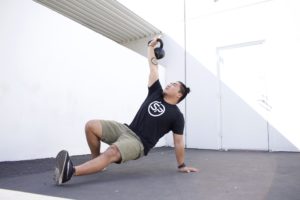
Knee sleeves or NO knee sleeves. It depends on each persons’ situation; we have broken it down into 5 criteria so that you can decide if knee sleeves are a tool you want to implement into training.
1. Knee sleeves can be a helpful tool because they provide additional support around the knee joint, this may be important especially when lifting heavier weights or doing high repetition exercises. Knee sleeves are not always needed but have the most impact when squatting, lunging, or jumping. These movements place the most stress on the knee joint because of bending during squatting or the high impact from jumping.
2. If you can squat without pain or do not typically train using heavy weights or high repetition exercises, your knees will likely hold up just fine without additional support from knee sleeves.
3. Knee sleeves may be beneficial for some athletes looking for pain relief, reduced swelling, or providing additional support around the knee to actively minimize muscle soreness and minor injuries.
4. Here’s how sleeves work: through compression, they provide the sensation of support and increased awareness of your knee. It is the same as wrapping your hands around your knee (your attention focuses on that area) so you are more mindful of the position of your knee. Also, they help to warm the knees quickly because there’s no breathability. Just like a proper warm up, having warm joints is thought to reduce chances of injury. Additionally, compression helps to reduce pain by increasing blood flow to the area, reduce swelling, and providing the joint with extra support.
5. Knee sleeves will be more beneficial if you squat or bend your knee beyond 90 degrees or “parallel to the ground.” The compression from the knee sleeves at this depth will help create a “spring” effect, where you feel the additional support from the sleeve. If you do not squat beyond 90 degrees or “parallel to the ground,” the benefit from the knee sleeve is based on the previous criterion.
Although there are benefits to their use, knee sleeves will not protect against poor mechanics; it’s important to be certain you are lifting with proper form for healthy joint motion and injury prevention. If you have pain or swelling with exercises that do not resolve after activity, or get worse with activities, seek a healthcare specialist. Their education in assessing movement and exercise-related injuries can help provide you with a plan for recovery and moving better safely!
As always, we hope this helps! If you have any questions or if you would like to read about certain topics, feel free to send us an email at TeamSP@SportsPerformancePT.com.
-Dr. Luke

STAY CONNECTED
Instagram: CLICK HERE
Facebook: CLICK HERE
YouTube: CLICK HERE
Podcast: CLICK HERE
TUNE IN TO OUR PODCAST












